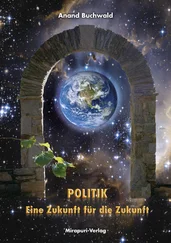DELEGITIMIZING TRADITIONAL SINO-TIBETAN "INTERNATIONAL" RELATIONS
The failure of the British to understand the existing complex Sino-Tibetan relations had as much to do with their heady faith in the superiority of European norms as with their conflicting interests in the region. Where does this leave indigenous modes of interaction between China and Tibet? The "intent expressed by both sides through this relationship was not founded on the present-day under standing of sovereignty and interstate relations, influenced for the most part by the West" (Schmitz 2004, 48). The nature of the Tibetan state was interlinked with Sino-Tibetan relations.
Traditionally, political actors interpreted and understood their interstate relations in vocabularies familiar to them. Sino- Tibetan intercourse was no exception. The same relations could have been understood by the Chinese imperial officials in Confucian tributary terms and by the Tibetans as Buddhist mchod-yon. This does not validate the primacy of either worldview but reveals the complexity of the issue involved. Grounding the interaction in some universally accepted terms was unnecessary within the Chinese as well as the Tibetan worldview.
Personal, moral, religious, and political overtones were a significant part of the relations. While some have argued that mchod-yon, "patron-priest relations," was the main characteristic of the Sino-Tibetan world (see Klieger 1994), others have clarified that this was more about personal relationships between rulers and not about statehood (see Barnett 1999). Shakya points out that the concept indicates that the Tibetans viewed the Chinese emperor only as a secular institution, which is far from the case-Manchu emperors, for instance, were often referred to as Jampeyang Gongma, the incarnation of Manjushri, defining them not as merely secular patrons but as occupying a space within a Buddhist pantheon exercising some measure of secular authority in Tibet (1999, xxiii). The link between China's imperial dynasty and Tibet had a pronounced religious character and
is an example of the purely Central Asia concept of Patron and Priest in which the temporal support of the lay power is given in return for the spiritual support of the religious power… It is an elastic and flexible idea and not to be rendered in the cut-and-dried terms of modern western politics. There is no precise definition of the supremacy of one or the subordination of the other; and the practical meaning of the relationship can only be interpreted in the light of the facts of the moment. (Richardson, in Addy 1984, 27)
However, it is clear from observations of all nineteenth-century commentators and travelers that there was a definite political dimension to the relation too. Political dominance by the Chinese imperial dynasty was founded on a military supremacy even though for the most part China did not assert its dominance in politico-military terms. And throughout modern history, the relationship evolved depending on the internal and external situation in Tibet. Sperling argues rightly that it is a fallacy to underplay the political dominance entailed within the concept of mchod-yon (2004). Li points out that "the patronage relationship between China and Tibet in a Buddhistic sense is not comparable to any Western system and no exact equivalent can be found in Western terminology. At least, the Chinese part as a patron, who is supposed to give and not to take, should not be construed as a sign of weakness or as a sort of bribery" (1954, 215-16).
And yet, the patron derived a lot of symbolic resources from its priest. Tibetan Buddhism, with the support of senior Tibetan lamas, was seen as a sobering and controlling factor and a useful ally in the diverse Qing empire. And at the same time, the Qing imperial dynasty saw the Tibetan religious hierarchy as coreligionists and hence the senior lamas as integral to its own well-being. Tibet was a tributary state but it was a special one because of the charismatic lamas' dominant influence in Buddhist Central Asia (Norbu 1990).
The "confusion" about Sino-Tibetan relations arises partly out of the nature of the Tibetan state. It was not a state in the modern European sense simply because it was not a modern European state. The model of sovereign statehood that is the dominant vocabulary for collective political self-expression today is a product of decades of violent scripting upon the shifting sands of diverse and ambiguous political communities. Traditional Tibet could not be cartographi-cally and geopolitically mapped in modern times without recourse to epistemic and military coercion. This is what happened through the activities of European imperialism and then modern Chinese state making. McGranahan rightly argues that the traditional Tibet state did not conform to either the "colonial model" or the "united model" (as claimed by the Tibetan government in exile) but was a "contested" state that, if mapped, would "have to be a series of maps demonstrating change over time, and including the 'hard' lines of modern nation-states, graphical indication of contested territories, and gradual shading to designate areas of stronger and weaker connections to Lhasa, as well as the historically expansive borders of Tibet" (2003, 287).
The strangeness of Tibet as a state was not a result of the odd, irrational, fantastic, mystical, Tibetan way of being. In fact, there was nothing "strange" about Tibet. It was the universalization of specific particularistic European ideas through imperialism and decolonization that rendered the Tibetan state as strange and different and an anomaly by 1950. In his detailed study of the Tibetan state, Samuel reveals that "Tibet was a society that combined the literacy and rationality that we associate with centralized states with the subtle exploitation of shamanic processes more familiar from stateless and tribal peoples" (1993, 577; see also Samuel 1982, 1994).
This does not mean there was no Tibet before British imperialism and then the modern Chinese state constructed it. There certainly was the place of Tibet (even though it was not called as such), which had its own lived, competing, and complex histories and realities. But it could not be easily translatable into modern politico-legalistic terms. Even when China had "the upper hand" (Bataille 1992, 33), Tibet "enjoyed local autonomy over domestic matters" (Grunfeld 1987, 57), and more significantly, on the basis of simple experienced reality, Tibetans considered themselves not to be a part of China (Barnett 1999). The use of "Tibetan" as a category as different from "Chinese" itself may be a commentary on the separate Tibetan identity. While not being clear about the boundaries of Tibet, all foreign travelers seem to find it easy to differentiate between Tibetans and Chinese (for instance, Pratt 1892).
What Ward wrote in 1941 is an indicator of the alienness of the modern European conception of distinct geopolitical identity in the Tibetan context:
The Tibetans are a realistic people. They do not understand trigonometry. But they have solid understanding of their own culture, and its natural environment. So while the India government talks… about a natural frontier based on the position of peaks in relation to one another and to remote astral bodies, the Tibetan walks over the passes and descends the India side of the Assam Himalayas until he reaches a point where trees of a certain kind cease, or crops of a certain kind fail, or where the summer temperature is too high for him, or there are too many flies. That, to him, is the natural frontier of Tibet. It is slightly fluid, and vague, and it bears no relation to the stars; but it is practical. There he stops, and marks the spot by building, not a fort, but a monastery to the greatest glory of his religion. (BOD MS Or. Aris 18 n.d., 232-33)
Читать дальше












